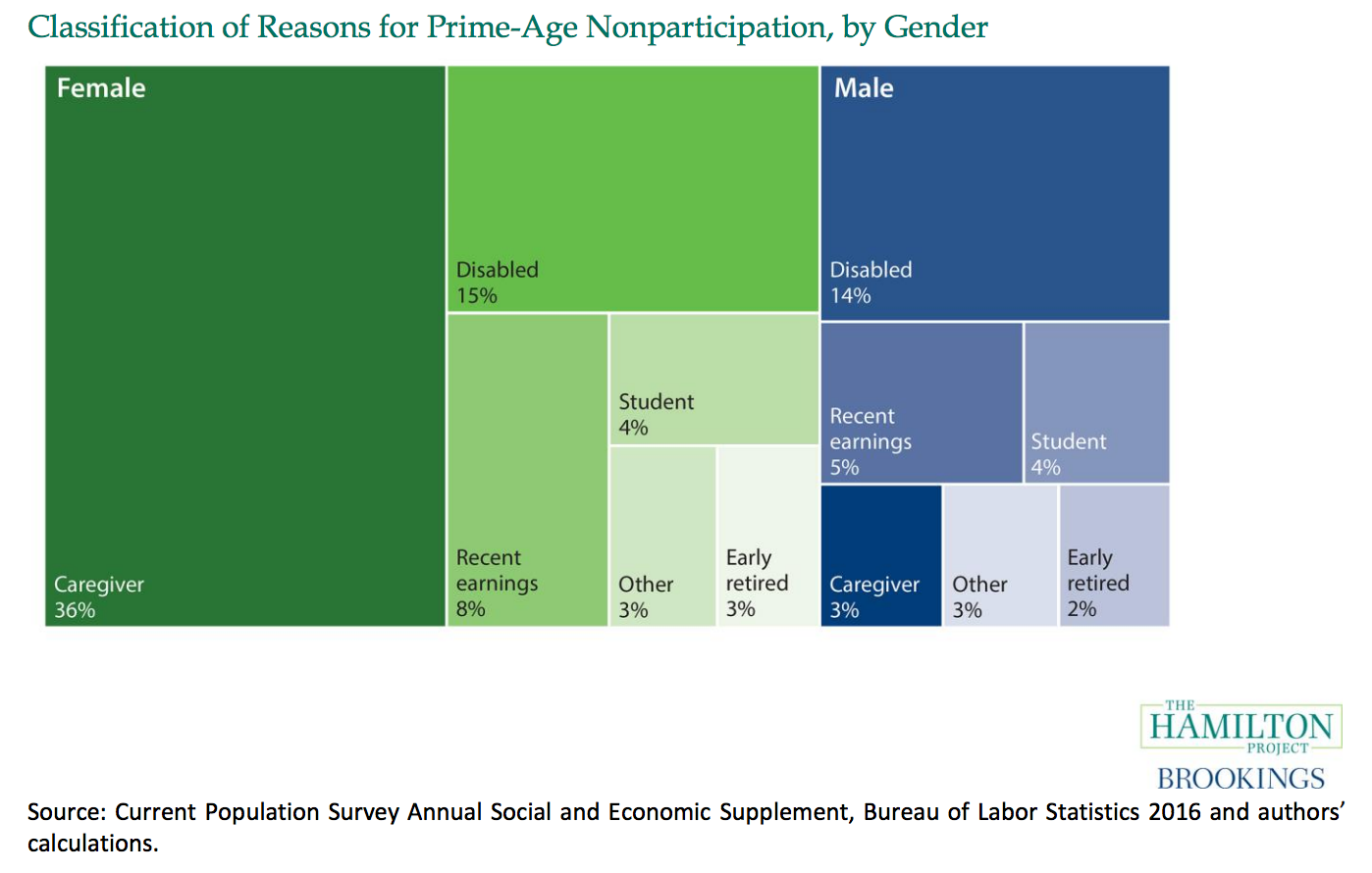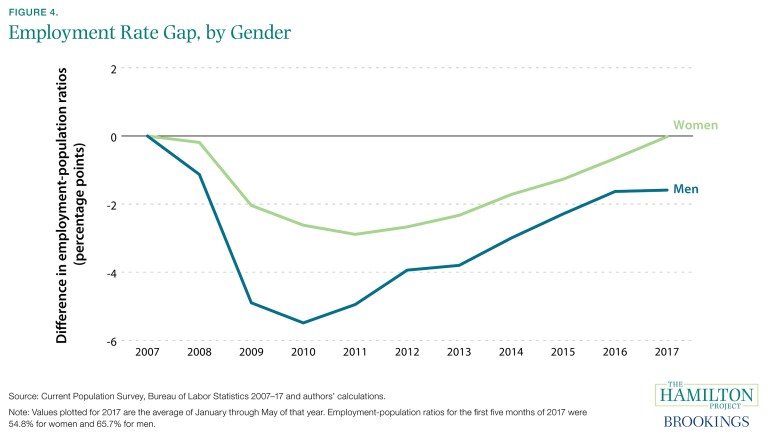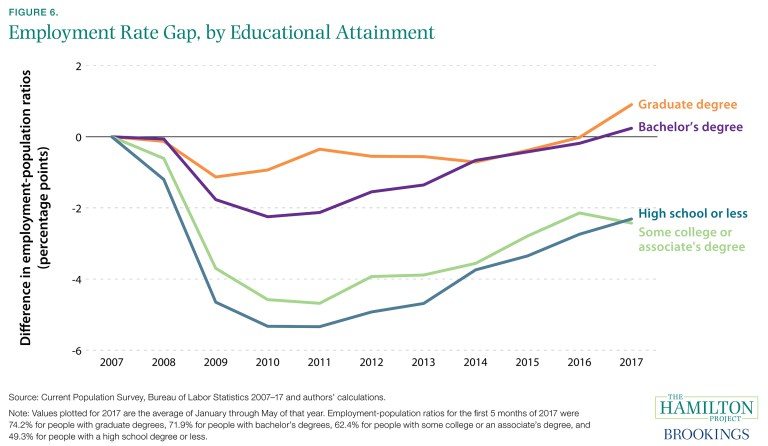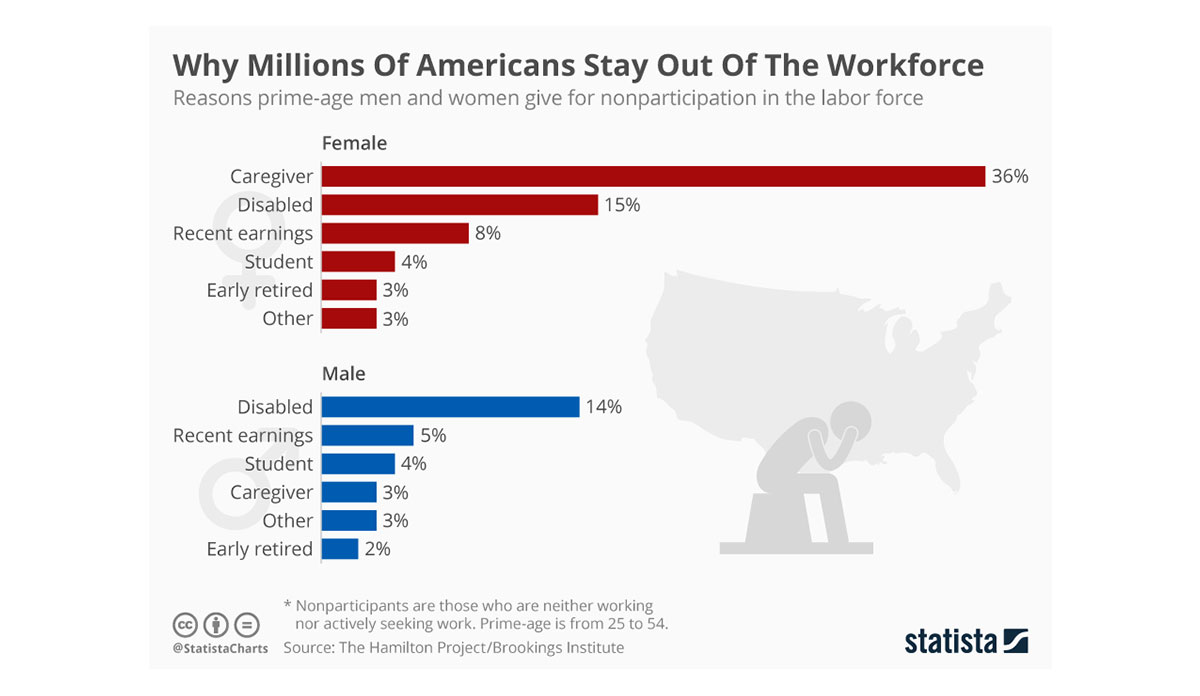Nearly 24 million people of prime working age (25-54) are not employed, nor are they seeking work. According to the Brookings Institution, the labor force participation rate has been dropping since 1999, and one-fifth of all prime working aged adults in the U.S. are “nonparticipants.”
For both women and men, the number of “nonparticipants” and their reasons for nonparticipation in the workforce would be nearly equivalent, were it not for one major factor—caregiving.
“Women account for twice as many nonparticipants as men—with 16 million prime-age women and 7 million prime-age men nonparticipants—and about half of these women cite caregiving as the reason for nonparticipation,” according to a new report from Diane Whitmore Schanzenbach, Ryan Nunn, Lauren Bauer, and Audrey Breitwieser of the Brookings Institution & the Hamilton Project.
In general, the research shows that an “overwhelming” majority of Americans out of the workforce are women with a high school education or less. Even at the bachelor’s level, “three-and-a-half times as many women as men are nonparticipants.”

Photo via Diane Whitmore Schanzenbach, Lauren Bauer, Ryan Nunn, and Megan Mumford, Who Is Out of the Labor Force? The Hamilton Project.
A second report by the same Brookings-Hamilton collaboration titled “The Closing of the Jobs Gap,” cites results of researchers’ economic analysis of job recovery after the 2007 Great Recession. The report says that, as of April 2014, the job gap—defined as “jobs needed to return to the national employment rate prior to the Great Recession, accounting for population growth and aging”—has been closed. However, it is ‘more closed’ for some groups than for others.

Photo via The Closing of the Jobs Gap: A Decade of Recession and Recovery. Brookings and The Hamilton Project.
Women were hit less hard by the 2007 recession than men (with employment rate gaps of -2.9 versus -5.5 percentage points, respectively), and the job gap has closed for women, while the gap “stands at -1.6 percentage points” for men. However, women started with a lower employment rate than men to begin with—65.7% of men are employed versus 54.8% of women.
Interestingly, though, the employment gap for the group with high school diplomas or less is as dire now as the employment gap for those with bachelor’s degrees was at its widest in 2010.

Photo via The Closing of the Jobs Gap: A Decade of Recession and Recovery. Brookings and The Hamilton Project.
The report also notes that women who don’t work are most likely to live with a spouse. Men who don’t work are most likely to live with a parent.
As the report highlights, “Labor force participation is the key channel through which Americans contribute to and benefit from their economy, making it vital that we understand who is left out of the labor force.” Women have every right to be caregivers if they so choose, but the massive discrepancy in numbers between women caregivers and men caregivers suggests that caregiving women are still financially dependent on their partners.
Databyte via Niall McCarthy, Why Millions Of Americans Stay Out Of The Workforce. Statista.













